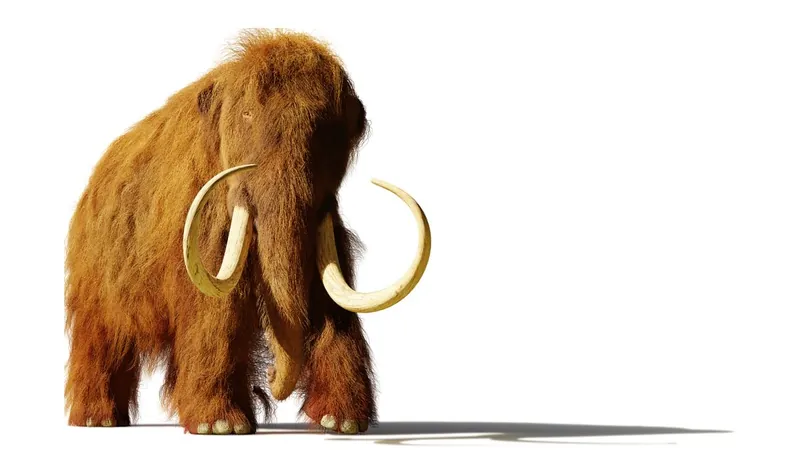
Unveiling the Ancient: North America's Oldest Woolly Mammoth Fossil and Its Surprising Genetic Insights
2025-04-11
Author: Daniel
In an astonishing discovery, scientists have unveiled the oldest-known woolly mammoth fossil in North America, shedding light on its remarkable genetic legacy. This ancient tooth, estimated to be 216,000 years old, was unearthed from the banks of the Old Crow River in Canada’s Yukon territory, pushing back the timeline of woolly mammoth migration to North America by over 100,000 years.
Lead researcher Camilo Chacón-Duque from the Centre for Palaeogenetics at Stockholm University emphasized the significance of the find, noting that most mammoth fossils from this era typically belong to other species. He stated, "The Old Crow mammoth is confidently identified as a woolly mammoth, marking an extraordinary discovery in North American paleontology."
As part of an extensive study on mammoth DNA, researchers extracted genetic material from this ancient find, revealing previously hidden genetic diversity among different mammoth lineages across over a million years of evolution. The analysis, published in the journal Molecular Biology and Evolution, identified this specimen’s DNA as part of the oldest genetic samples analyzed, although it was not the most ancient overall.
A Journey Through Time: The Evolution of Mammoths
Mammoths originated in tropical Africa and shared a common ancestor with modern elephants. They began migrating to the Northern Hemisphere around three million years ago, gradually adapting to colder climates. Chacón-Duque's team analyzed 34 new DNA samples from across the Northern Hemisphere, primarily Siberia and North America, alongside over 200 previously published samples.
This included the intricate task of dating the mammoth DNA. The researchers employed both radiocarbon dating and refined molecular clock dating methods, enhancing accuracy for assessing older samples. Most analyzed samples were under 50,000 years old, while a handful of fossil samples were dated using innovative techniques.
A Eureka Moment in Dating History
When dating the Old Crow mammoth, Chacón-Duque experienced a "eureka moment" as the DNA-derived estimate perfectly correlated with geological evidence. "This was a thrilling achievement after months of meticulous refinement of our dating methods for samples beyond the radiocarbon limit," he remarked.
The Ancient Journey Continues: Mammoths in North America
Mammoths first entered North America well before the Old Crow specimen. The Columbian mammoth, which reached massive heights of up to 13 feet, migrated across ancient land bridges connecting Asia and North America about 1.5 million years ago. Woolly mammoths evolved later, around 700,000 years ago, in eastern Siberia and are believed to have crossed into North America between 120,000 and 10,000 years ago—though the Old Crow discovery suggests they may have arrived even earlier.
Previous studies hinted at a presence dating back 400,000 years, and this fossil confirms that woolly mammoths inhabited North America much longer than initially thought, over 200,000 years.
The Dance of Diversity: Climate's Role
This groundbreaking research also highlights the impact of climate fluctuations on mammoth diversity. Chacón-Duque noted that during warmer periods, mammoths often retreated to refugia, only to expand during colder climates, particularly at the onset of ice ages.
By the end of the last ice age, around 10,500 years ago, most mammoths vanished as the world warmed. Some isolated populations lingered on in Alaska and Siberia for a few millennia before succumbing to extinction about 4,000 years ago.
With the discovery of the Old Crow mammoth, we not only learn more about the majestic creatures of prehistory but also gain critical insights into their evolutionary journey and the environmental changes that shaped their fate.


 Brasil (PT)
Brasil (PT)
 Canada (EN)
Canada (EN)
 Chile (ES)
Chile (ES)
 Česko (CS)
Česko (CS)
 대한민국 (KO)
대한민국 (KO)
 España (ES)
España (ES)
 France (FR)
France (FR)
 Hong Kong (EN)
Hong Kong (EN)
 Italia (IT)
Italia (IT)
 日本 (JA)
日本 (JA)
 Magyarország (HU)
Magyarország (HU)
 Norge (NO)
Norge (NO)
 Polska (PL)
Polska (PL)
 Schweiz (DE)
Schweiz (DE)
 Singapore (EN)
Singapore (EN)
 Sverige (SV)
Sverige (SV)
 Suomi (FI)
Suomi (FI)
 Türkiye (TR)
Türkiye (TR)
 الإمارات العربية المتحدة (AR)
الإمارات العربية المتحدة (AR)